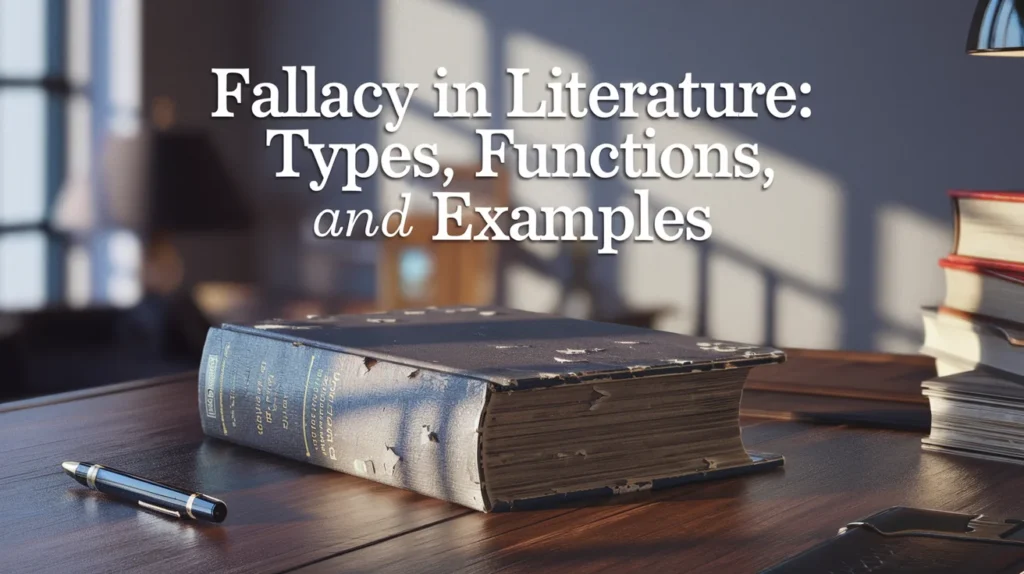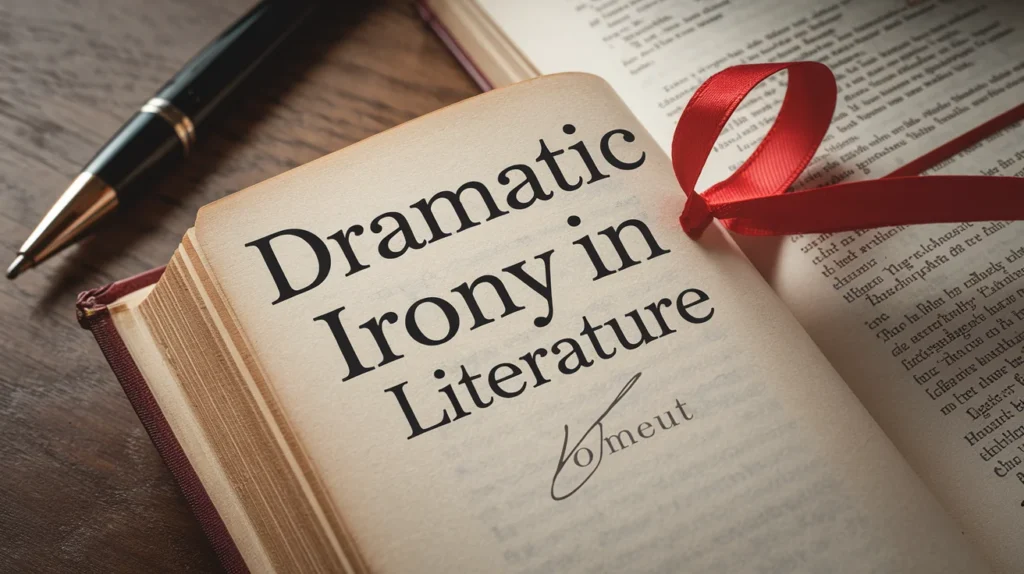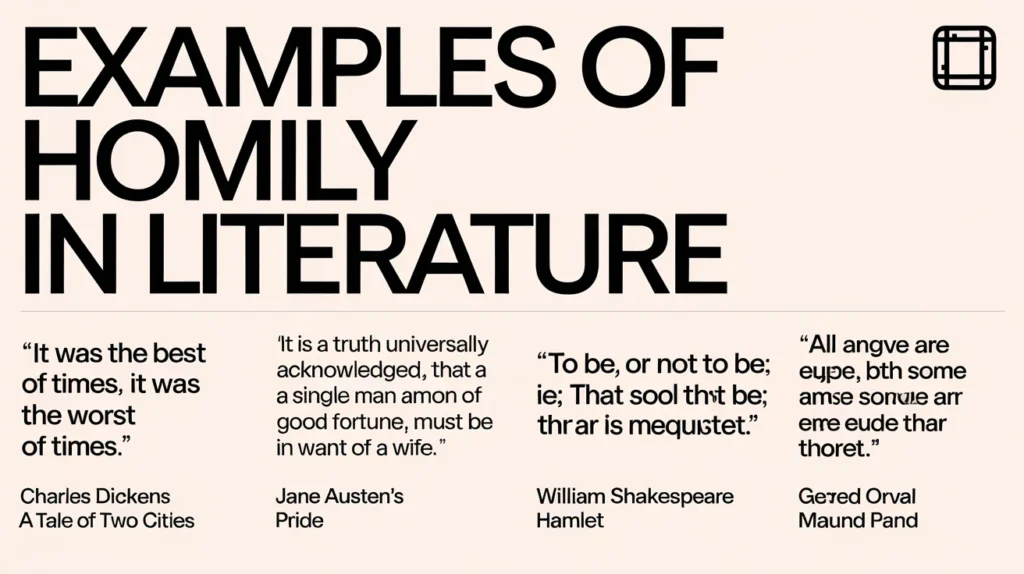Fallacies are not just errors in logic; they are powerful tools in literature that authors use to craft compelling narratives, develop characters, and convey deeper themes. Understanding fallacies in literature helps readers and critics alike to dissect the layers of meaning in a text, revealing the intricate ways in which writers manipulate logic to serve their storytelling purposes. In this comprehensive guide, we’ll explore the definition of fallacy, its types, its functions in writing, and provide examples from classic literature to illustrate how fallacies shape some of the most iconic works in literary history.
What is a Fallacy in Literature?
A fallacy is a logical error in reasoning that undermines the validity of an argument. In literature, fallacies are often used intentionally by authors to reflect the flawed thinking of characters, highlight societal issues, or create dramatic tension. While fallacies in real-life debates are typically seen as weaknesses, in literature, they serve as narrative devices that enrich the story.
For example, a character might use a straw man fallacy to misrepresent another character’s argument, creating conflict and driving the plot forward. Similarly, an author might employ a false dilemma to simplify a complex situation, forcing characters (and readers) to confront difficult choices.
Fallacies in literature are not just about logic; they are about human nature. They reveal how people think, argue, and make decisions, often exposing biases, fears, and desires. By studying fallacies in literature, we gain insight into the psychological and philosophical underpinnings of both characters and the societies they inhabit.
Types of Fallacy in Literature
Fallacies in literature can take many forms, each serving a unique purpose in the narrative. Below are some of the most common types of fallacies found in literary works:
Ad Hominem
An ad hominem fallacy occurs when a character attacks another character’s personality or character instead of addressing their argument. This fallacy is often used to undermine credibility or create tension between characters.
- Example in Literature: In Shakespeare’s Othello, Iago uses ad hominem attacks to discredit Cassio, calling him a “drunkard” to manipulate Othello’s perception of him.
Straw Man
A straw man fallacy involves misrepresenting or exaggerating an opponent’s argument to make it easier to attack. Authors use this fallacy to highlight misunderstandings or create dramatic confrontations.
- Example in Literature: In To Kill a Mockingbird by Harper Lee, Bob Ewell misrepresents Tom Robinson’s character to sway the jury, creating a straw man that reinforces racial prejudices.
False Dilemma
A false dilemma presents a situation as having only two possible outcomes, ignoring other alternatives. This fallacy is often used to create tension or force characters into difficult decisions.
- Example in Literature: In Sophie’s Choice by William Styron, Sophie is forced to choose between her two children, a false dilemma that underscores the horrors of war.
Appeal to Authority
An appeal to authority fallacy occurs when a character uses the opinion of an authority figure to support their argument, even if the authority is irrelevant or biased.
- Example in Literature: In The Crucible by Arthur Miller, characters appeal to religious authority to justify the witch trials, highlighting the dangers of blind faith.
Circular Reasoning
Circular reasoning is a fallacy where the conclusion of an argument is assumed in the premise, creating a loop that offers no real evidence.
- Example in Literature: In 1984 by George Orwell, the Party’s slogan “War is peace, freedom is slavery, ignorance is strength” is a classic example of circular reasoning, reinforcing the manipulation of truth.
Red Herring
A red herring is a distraction tactic used to divert attention from the main issue. Authors use this fallacy to create suspense or mislead readers.
- Example in Literature: In The Da Vinci Code by Dan Brown, red herrings are used throughout the plot to keep readers guessing about the true identity of the antagonist.
Functions of Fallacy in Writing
Fallacies serve several important functions in literature, from character development to theme reinforcement. Here’s how authors use fallacies to enhance their storytelling:
Character Development
Fallacies reveal the flaws, biases, and motivations of characters. For example, a character who frequently uses ad hominem attacks might be portrayed as insecure or manipulative.
Plot Development
Fallacies can drive conflict and create plot twists. For instance, a false dilemma might force a character to make a difficult choice that changes the course of the story.
Themes and Messages
Fallacies often highlight societal, moral, or philosophical critiques. For example, the use of appeal to authority in The Crucible critiques the dangers of blind obedience.
Reader Engagement
Fallacies challenge readers to think critically about the narrative. By recognizing fallacies, readers can uncover deeper meanings and engage more deeply with the text.
Examples of Fallacy in Literature
To better understand how fallacies function in literature, let’s examine some classic examples from well-known works:
“Oliver Twist” by Charles Dickens
- Fallacy Used: Appeal to Pity
- Example: Oliver’s portrayal as an innocent victim evokes empathy from readers and other characters.
- Analysis: This fallacy critiques the social injustices of Victorian England, highlighting the plight of the poor.
“Brave New World” by Aldous Huxley
- Fallacy Used: False Dilemma
- Example: Society is presented with a choice between stability and freedom.
- Analysis: This fallacy underscores the dystopian theme, showing how societal control limits individual autonomy.
“1984” by George Orwell
- Fallacy Used: Circular Reasoning
- Example: The Party’s slogans, such as “War is peace, freedom is slavery, ignorance is strength.”
- Analysis: This fallacy reinforces the manipulation of truth and the oppressive nature of the regime.
“Jane Eyre” by Charlotte Brontë
- Fallacy Used: Straw Man
- Example: Mr. Brocklehurst misrepresents Jane’s character to justify her punishment.
- Analysis: This fallacy highlights the hypocrisy and injustice of authority figures.
“The Great Gatsby” by F. Scott Fitzgerald
- Fallacy Used: Appeal to Tradition
- Example: Tom Buchanan defends old money values to justify his superiority.
- Analysis: This fallacy critiques the emptiness of the American Dream and the elitism of the upper class.
“The House of the Seven Gables” by Nathaniel Hawthorne
- Fallacy Used: Red Herring
- Example: The Pyncheon family’s curse distracts from the true source of their misfortune.
- Analysis: This fallacy builds suspense and mystery, keeping readers engaged.
Conclusion
Fallacies in literature are more than just logical errors; they are narrative tools that authors use to enrich their stories. By understanding the types and functions of fallacies, readers can gain deeper insight into the characters, themes, and messages of their favorite works. Whether it’s the appeal to pity in Oliver Twist or the circular reasoning in 1984, fallacies reveal the complexities of human reasoning and the power of storytelling.
Next time you pick up a book, pay attention to the fallacies used by the characters or the author. You might just discover a new layer of meaning that you hadn’t noticed before.


